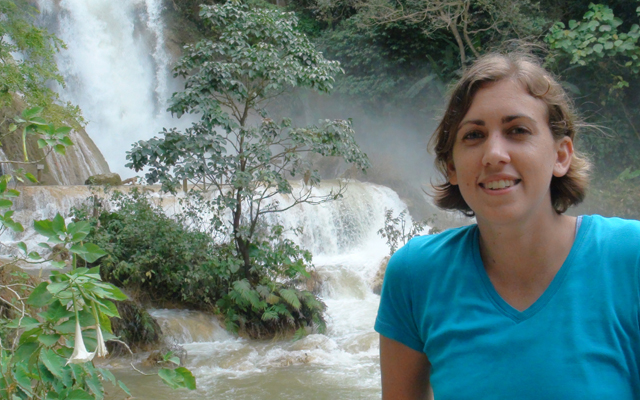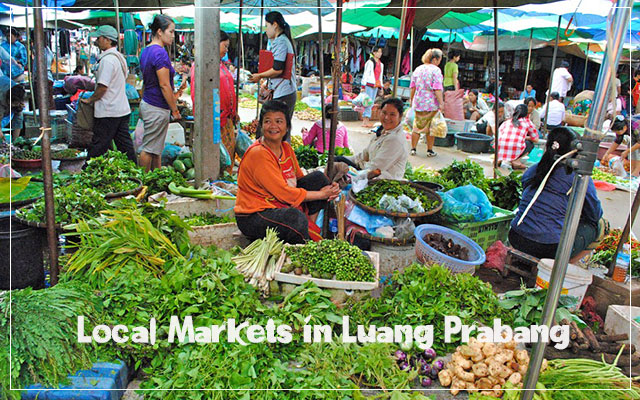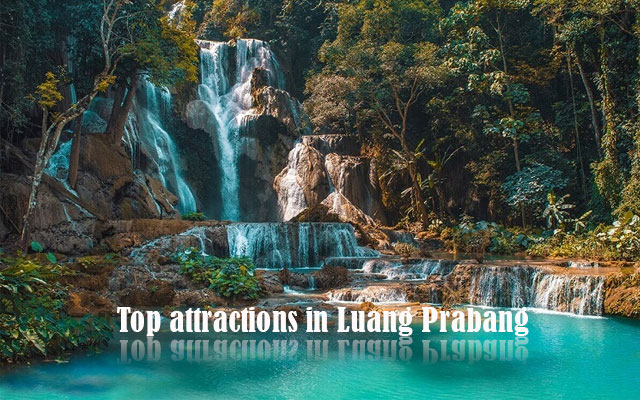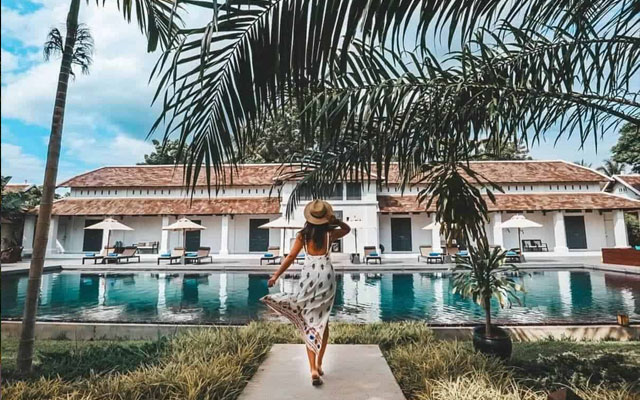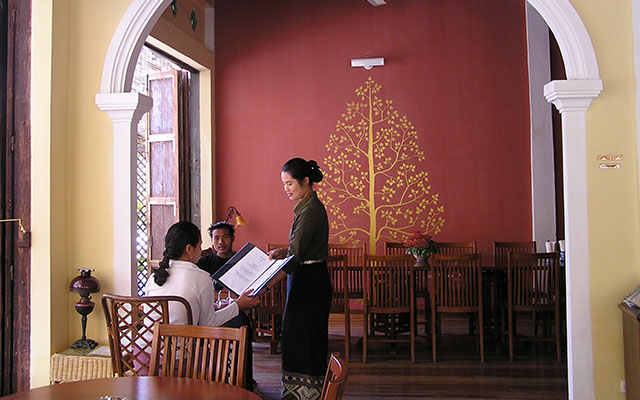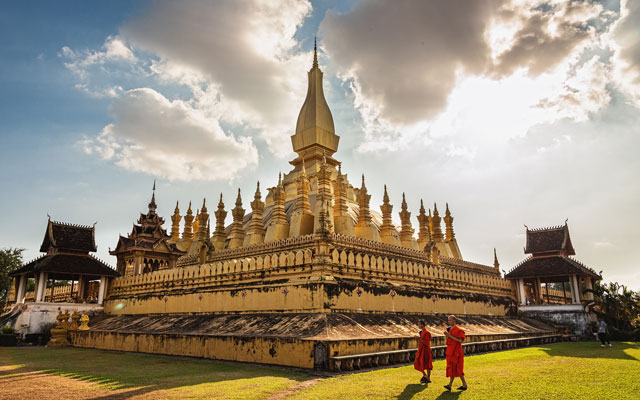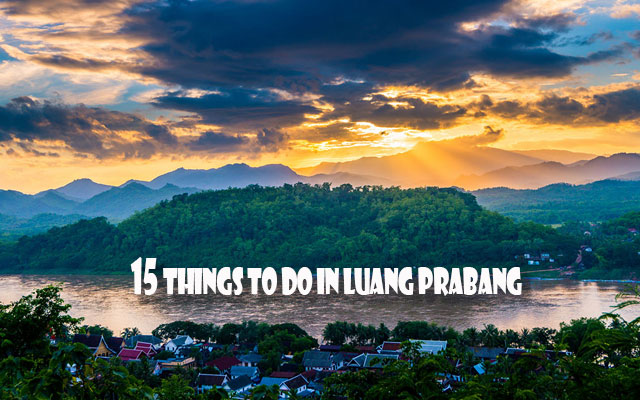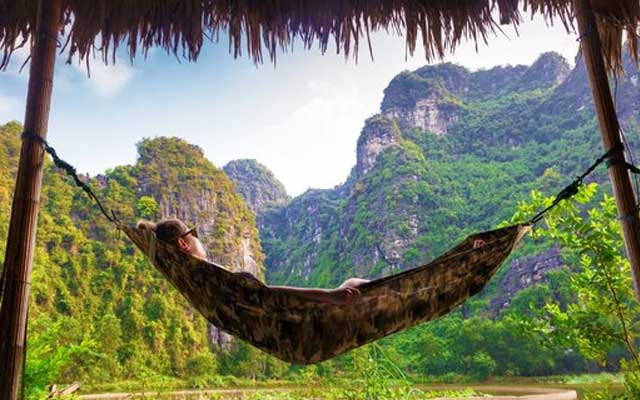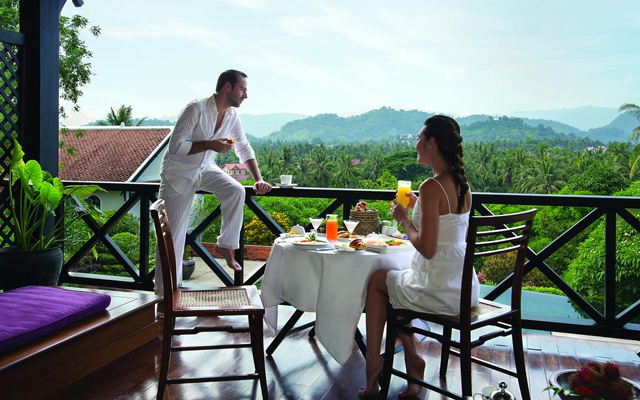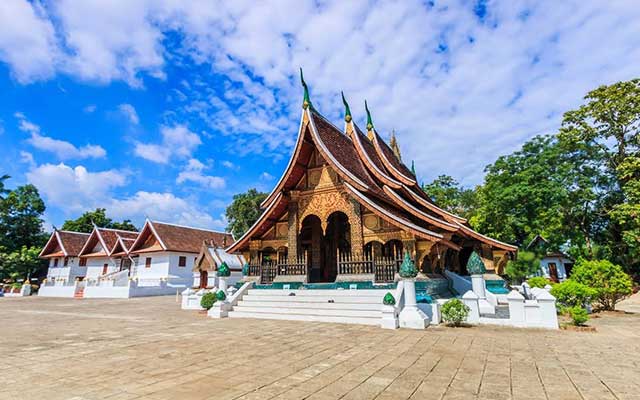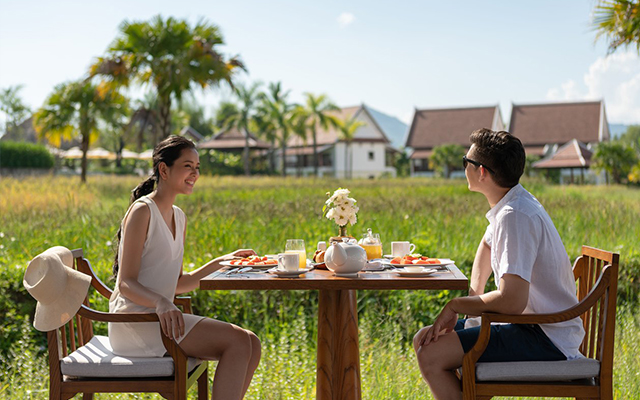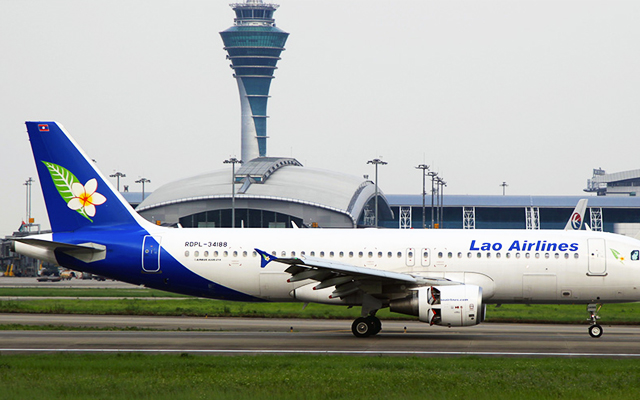Luang Prabang Travel Guide
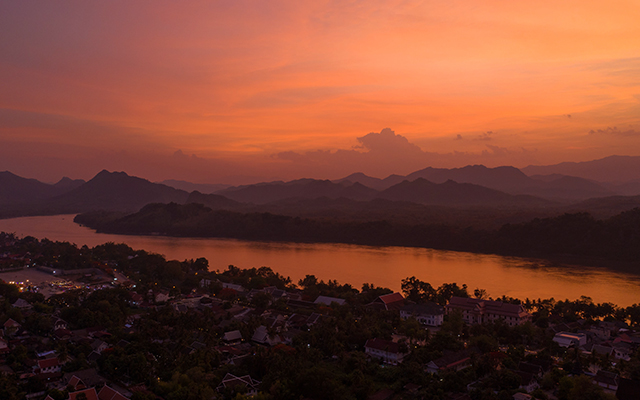
Luang Prabang Travel Guide
Standing on the banks of the Mekong and Nam Khan Rivers in Northern Laos, Luang Prabang City offers a vibe of peace, tranquility, and bliss. With many Buddhist temples and shrines, this ancient capital certainly lives up to its name which literally translates into “Royal Buddha Image”. Although the foundations of the city are deeply rooted in spirituality and Buddhism, Luang Prabang’s varied colonial past adds an extra dimension to this humble city, which made this place cited as the World Heritage Site by UNESCO for its outstanding culture, history, and architectural magnificence.
Visit Luang Prabang for an unforgettable adventure. Discover the best hotels, restaurants, and things to do with this highly curated Luang Prabang travel guide.
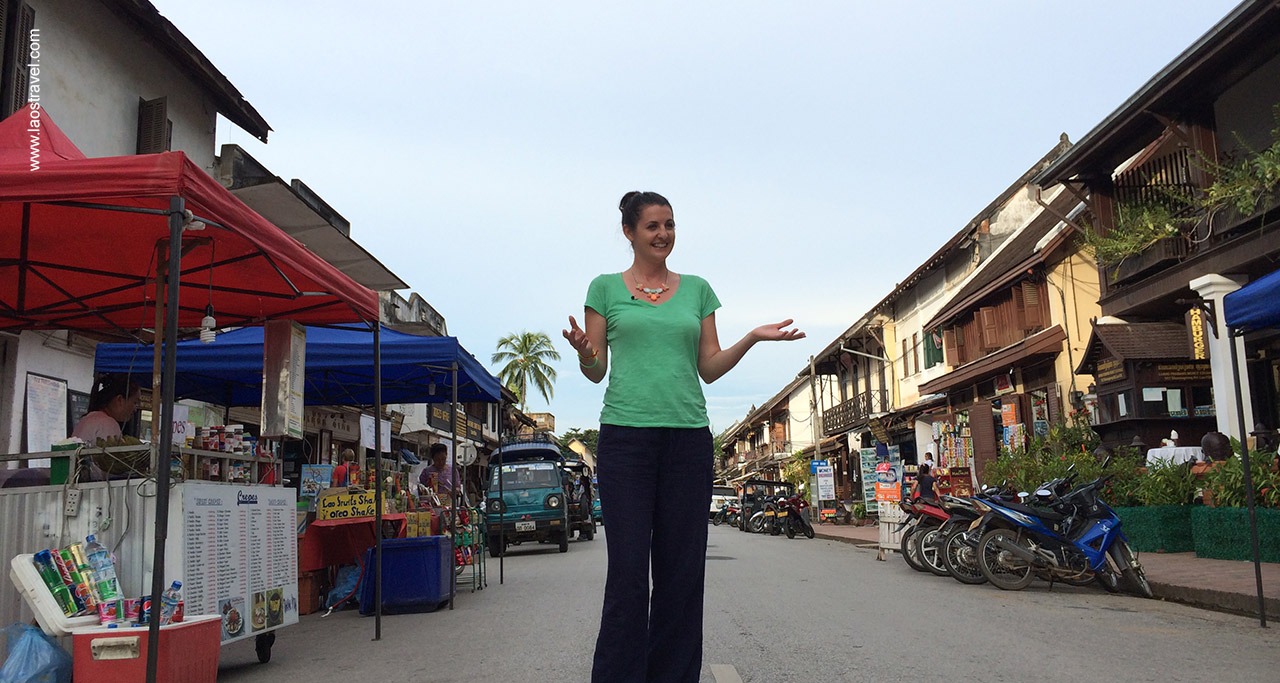
Welcome to Luang Prabang – a UNESCO World Heritage Site.
Contents
I. Overview of Luang Prabang
- Geographical location: Situated in the center of northern Laos, Luang Prabang borders the provinces of Oudomxay, Phongsaly, and Houaphanh to the north, Vientiane – the capital and Xayabouly to the south and southwest, and Xieng Khouang to the east.
- Area: 820 ha
- Buffet zone: 12, 560 ha
- The population of the city: roughly 56,000 people and the UNESCO-protected site inhabits around 24,000 people.
- Elevation: 305 m (1,001 ft)
- Post Code: 06000
- Telephone Code: 71
- Time Zone: UTC+7 (ICT)
- Ethnic groups: Khmu is the largest ethnic group in Luang Prabang Province (45%). The next is the Hmong ethnic minority (16%). 39% of the population is Low land Lao people who live in lowland valleys and Luang Prabang town.
- Official Currency: Lao Kip (LAK). Notes come in denominations of 500, 1,000, 2,000, 5,000, 10,000, 20,000, and 50,000. Besides LAK, US dollars and Thai baht are also widely accepted.
- Language: The national language is Lao. Besides, English is commonly used in major tourist spots in Luang Prabang. Thai is also widely understood.
History

Alms Giving Ceremony
Luang Prabang has first settled around 1200 years ago at the confluence of Mekong & Nam Khan Rivers in the heart of Northern Laos.
There are many legends that are associated with the creation of the city. One of them was that when resting here during the travels, Buddha smiled and prophesied that this location would be the site of a rich and powerful city one day.
Formerly known as Muang Sua (by Khun Lo, warlord who founded the city), then Xieng Dong Xieng Thong (by Chanthaphanit, the local ruler of Xay Fong – an out spot near Vientiane), the town became the capital of the powerful kingdom of Lane Xang by Fa Ngum, prince of Luang Prabang (Kingdom of a Million Elephants) from the 14th to the 16th century, and was also the center of Buddhism in the region. Luang Prabang took its name from a statue of Buddha, the Prabang, offered by the Khmer King from Angkor.
In 1560, the capital was moved by King Setthathirath I to Vientiane, which remains the capital today.
Due to a dynastic struggle, Lan Xang fell apart in 1707, and Luang Prabang became the capital of the independent kingdom.
In 1893, after the French Protectorate was established, Luang Prabang once again became the royal and religious capital during the reign of King Sisavang Vong until the Pathet Lao took over in 1975. The city is now part of Luang Prabang District, Luang Prabang Province, and is the capital and administrative center of the province.
II. When to Visit Luang Prabang?
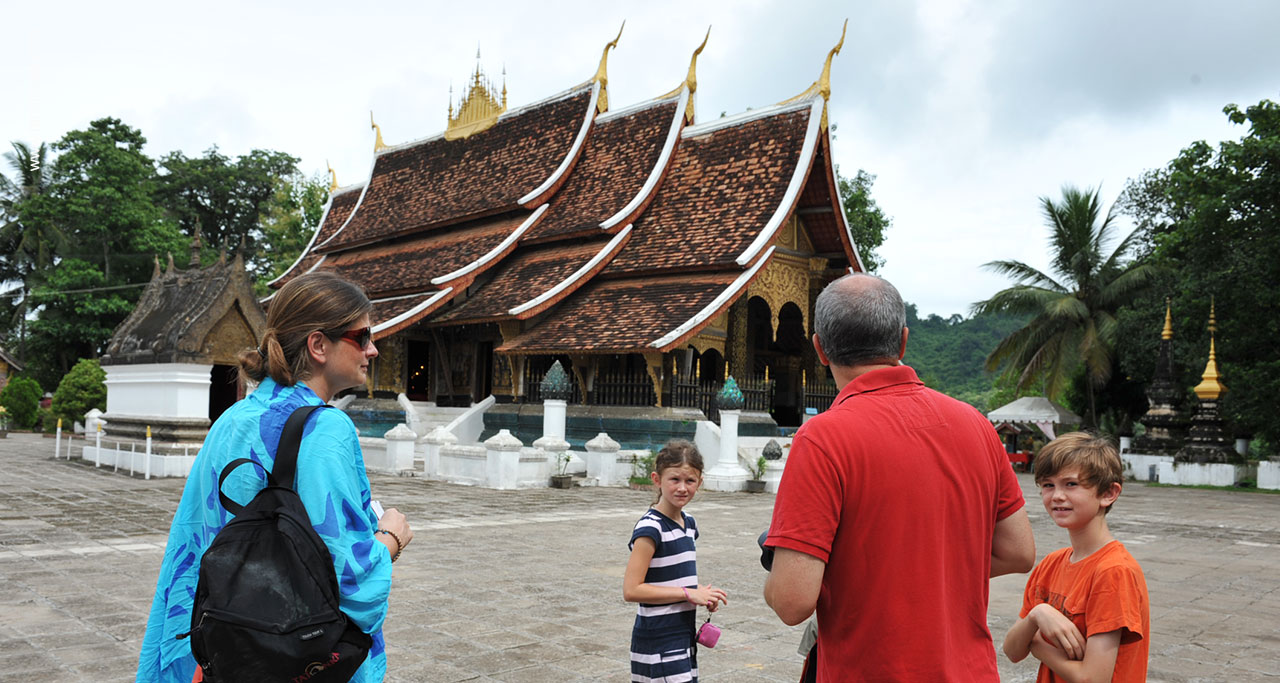
Wat Xieng Thong is one of the largest temples in Luang Prabang, a symbol of great historic importance.
Lying on 300m above sea level, Luang Prabang has a tropical climate, classified as Aw by Köppen and Geiger. In general, the city is very warm throughout the year, however, it is noticeably cooler in December and January.
Luang Prabang also experiences the wet season (April to October) and dry season (October to April). The ancient capital receives the annual precipitation at approximately 1,450mm (57in) with average rainy days of 99, average humidity at 82,8%, monthly sunshine hours of 2,128.4, and average annual high-low temperature at 31oC – 20oC.
The dry season is the prime time for Luang Prabang when the weather is the best. December is the driest month of the year with 14 mm (0.6 in) of rain. Of course, this also covers peak season (November to February) with the busiest time of travel and higher accommodation prices.
For the rainy season, if you don’t mind a few daily showers, then go ahead to visit Luang Prabang and in return, get the benefit of lower hotel prices and fewer crowds. August is the month with the precipitation reaching its peak of 295mm (11.6in) on average.
The warmest month of the year names May with the average temperature at 28.7 °C (83.7 °F) while January is the coldest month at 20.5 °C (68.9 °F) on average.
Better understanding the weather will be a good thing to ideally choose when traveling in Luang Prabang for your great trip.
III. Transportation from-to/in Luang Prabang.
Air (Airport code: LPQ)
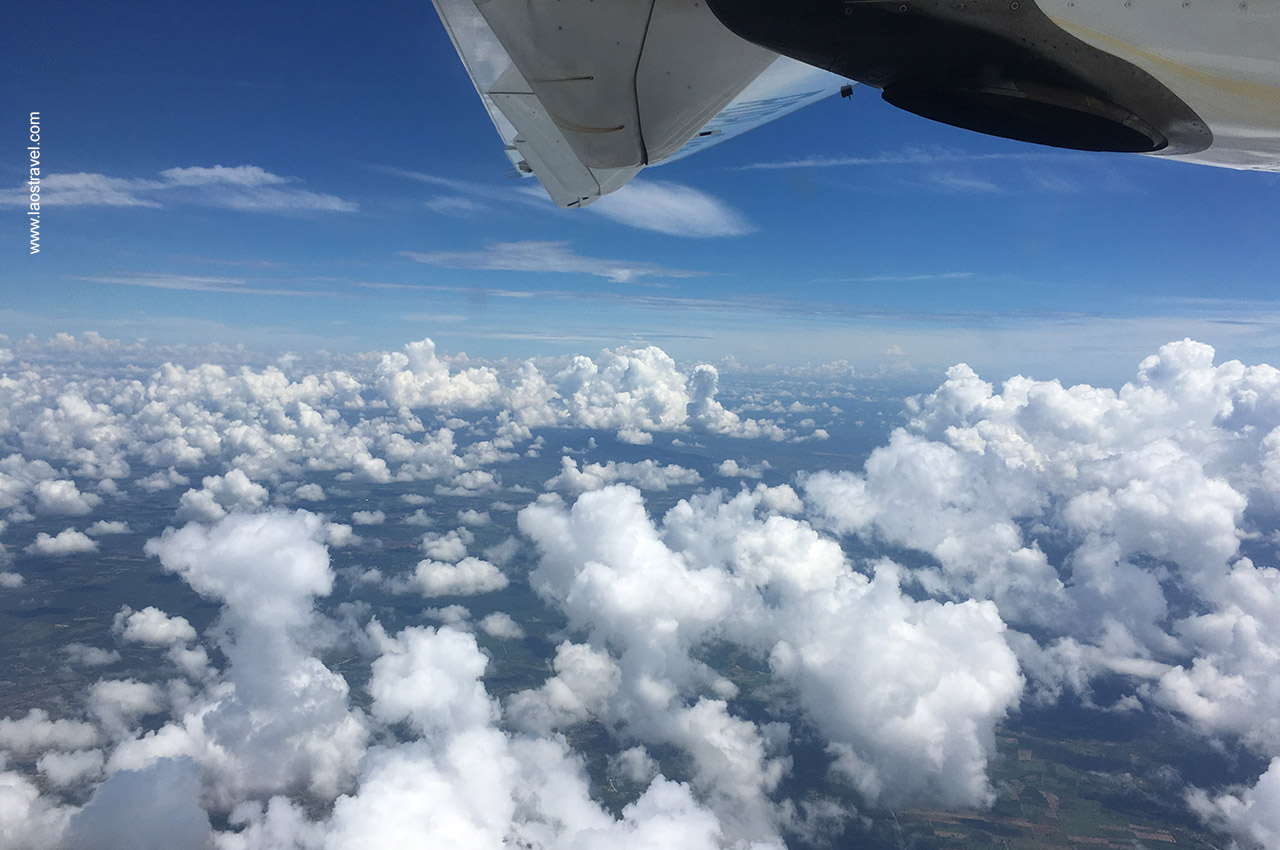
Flight over the blue sky.
Luang Prabang has its own international airport which is located 4km from the center, operating several domestic and international airlines such as Lao Airlines (QV), Bangkok Airways (PG), and Vietnam Airlines (VN). There are some direct regional flights from/to Bangkok, Chiang Mai (Thailand) on PG, or Hanoi (Vietnam) on VN-QV & Siem Reap (Cambodia) on VN.
For domestic flights, there are from Luang Prabang to Vientiane, Xieng Khouang, Pakse, and vice versa.
Luang Prabang Airport terminal also provides various services, including shops, restaurants, information desk, currency exchange booth, ATM, and options for transportation.
Road
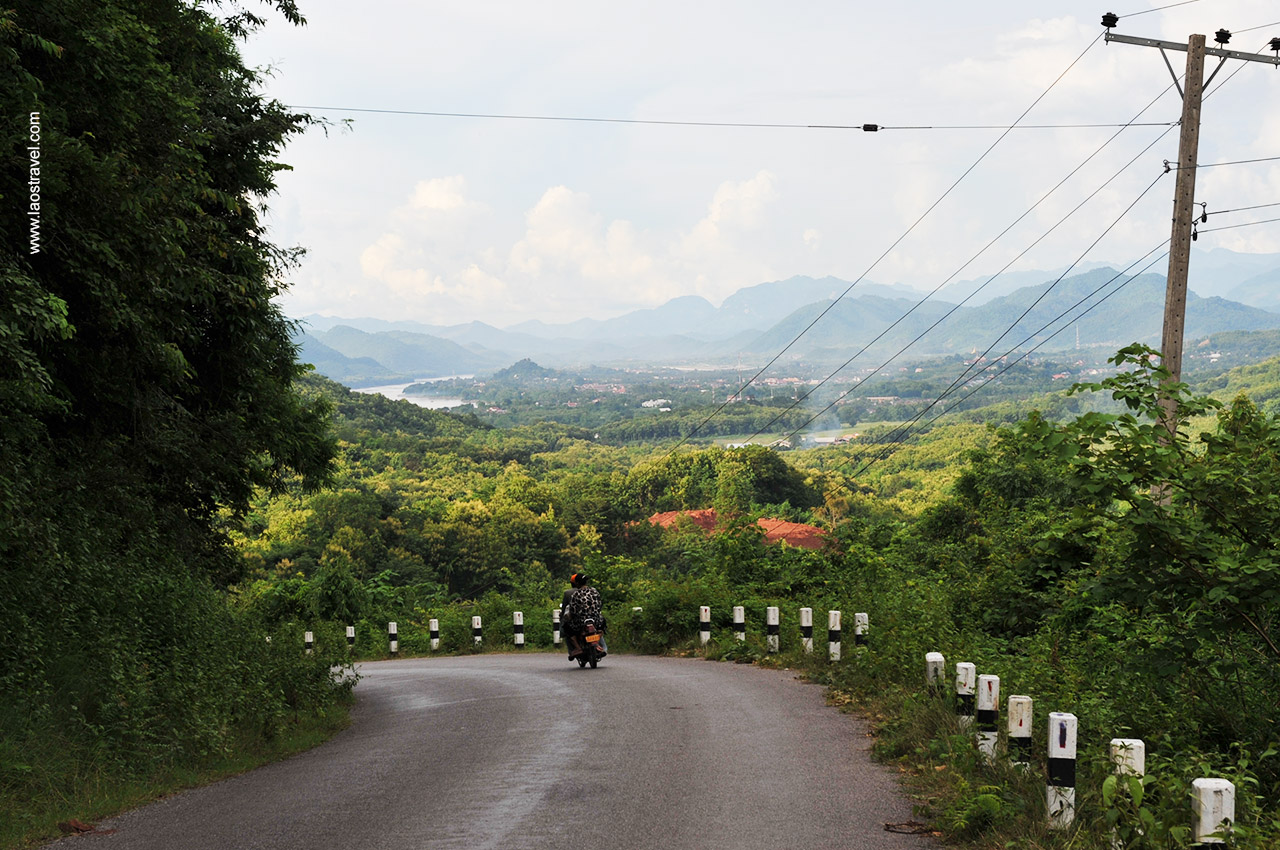
Route 13 is the country’s main route which stretches from Luang Prabang, passing through Vientiane, Savannakhet, and Pakse.
Route 13 serves Luang Prabang to Boten in the North and Vang Vieng, Vientiane in the South. Although the road is paved, the surface is still in poor condition at places. Since 2014, a new road connects Kasi (close to Vang Vieng) to Luang Prabang shortening the driving time from 5 hours (via Route 13) to 3 hours instead. The travel distance from Vientiane to Luang Prabang is about 314km, taking 7-13 hours depending on the vehicle type and what route you choose.
There are several daily buses that operate in 11-13 hours to reach the destination (average bus price is US$ 31/ticket). If from Huay Xai, the daily buses can take 9-12 hours to Luang Prabang at an average price of US$ 27/ticket. The road condition of this route is not so good and unsafe for the unfamiliar, particularly in the wet season. You can also arrive in Luang Prabang by sleeper buses from Hanoi, Vietnam (24-26 hours at US$ 42-50/ticket) or from Chiang Mai, Thailand (15-18 hours from US$ 50/ticket)
In Luang Prabang, the vehicle fee is cheap with tuk-tuk or bicycle. Within near distance, you can walk or rent a bike at around 20,000kip or 200,000-250,000kip for a tuk-tuk. The more you share, the cheaper the price is, especially when you are a solo traveler or with a small group.
Waterway
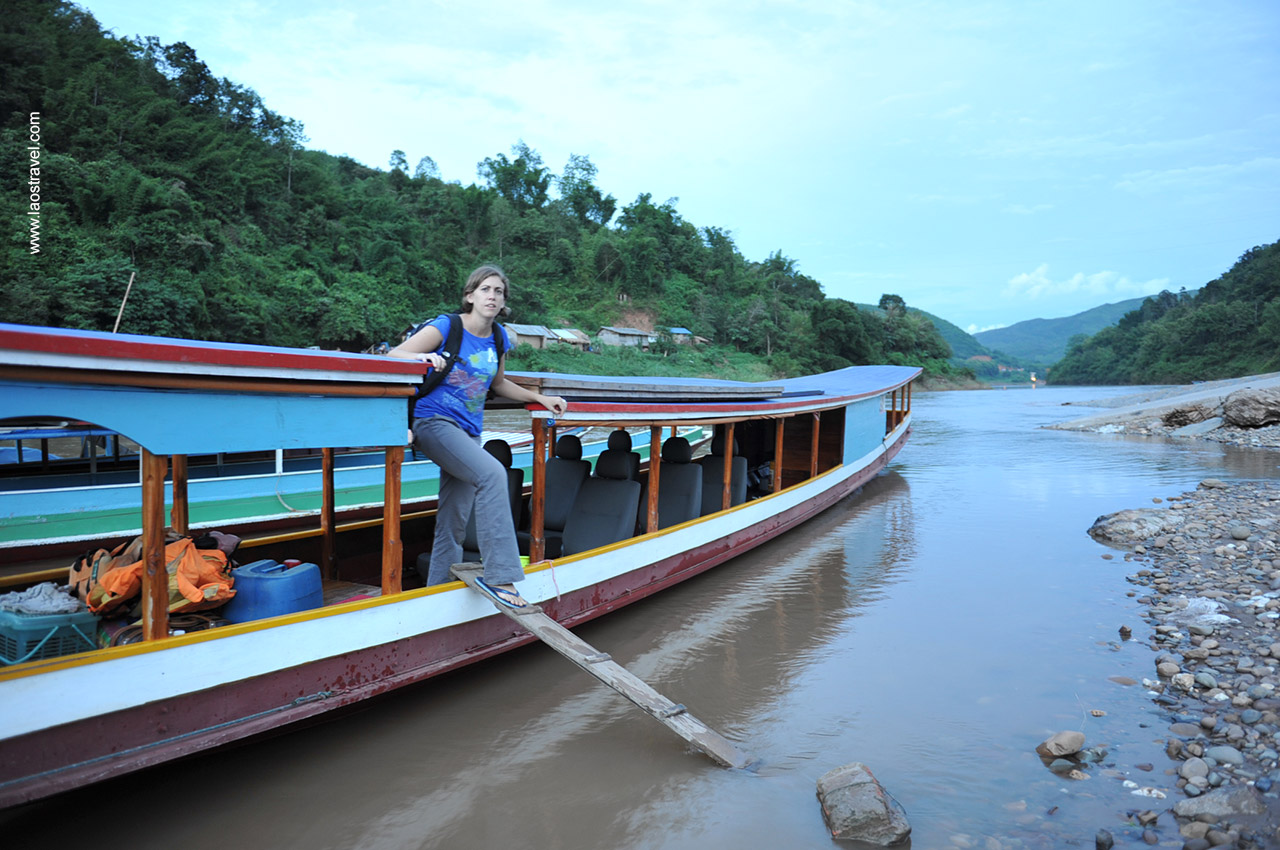
A slow boat trip on the river.
The Mekong River itself is an important transportation link among countries. If you’re coming from Northern Thailand (Chiang Khong), crossing the river by a barge, then you can take the slow boat downstream to Luang Prabang from Huay Xai for a 2-day trip with a typical stop at Pakbeng.
Railway
There is no direct train to Luang Prabang at the current stage. Thanaleng Station is the only station of the Bangkok–Thanaleng rail route on the Lao side of the border. There are 4 direct trains from Bangkok (Hualamphong Station) to Nong Khai or vice versa with the fastest train #75 (Bangkok-Nong Khai, departing at 8.20) and #76 (Nong Khai-Bangkok, departing at 7.00) with an estimated travel time is 9 hours 25 minutes.
From Nong Khai, you can take another train to Thanaleng (15 minutes, seat only, estimated departure time at 7.30 & 14.45). Then from here, you continue by bus/minivan to Vientiane (1-2 hours depending on vehicle type), then next to Luang Prabang.
Expected to be completed by the end of 2021, the Boten – Vientiane railway (also known as the China-Laos railway) will be a new railway that will connect Kunming in China to Vientiane in Laos in 414km. At the Southern end, Thailand is also preparing to build a new railway that will connect to this line. Once the plan is completed, traveling from Bangkok to China by train will be possible.
There are 20 stations on the line of Laos, including Luang Prabang. So, there will be a choice to travel from/to Luang Prabang by train in the near future.
Luang Prabang Gastronomy.
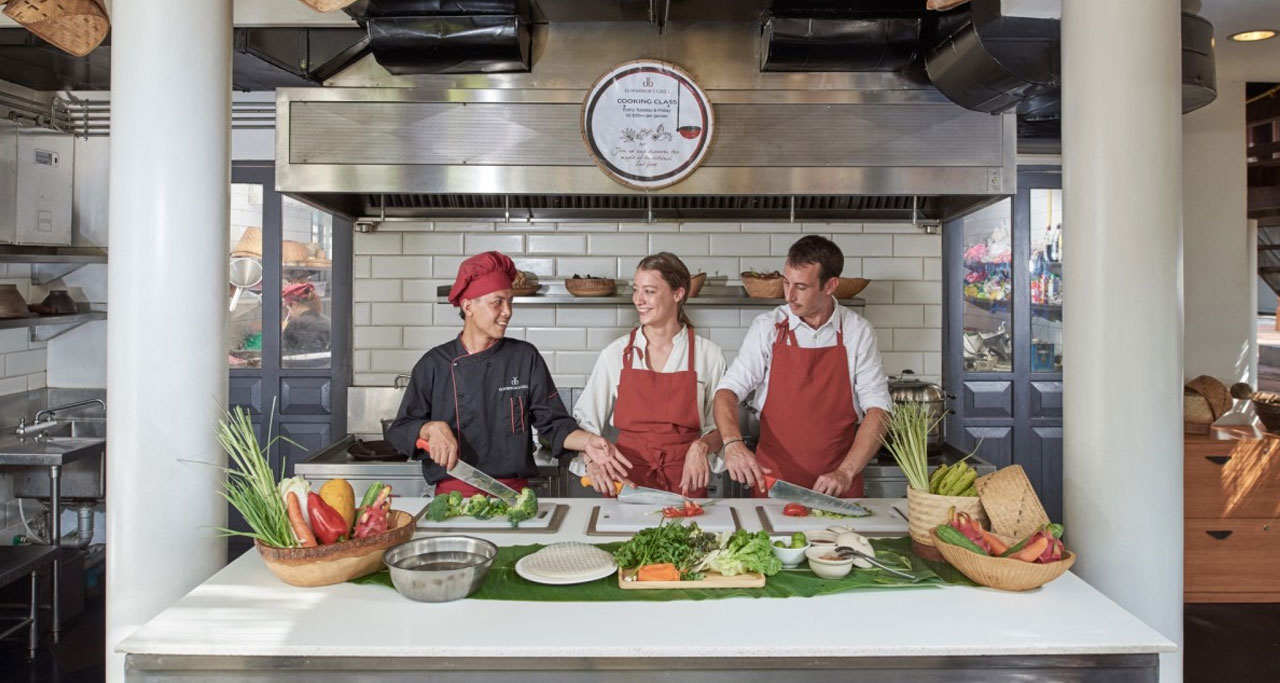
A cooking class in Luang Prabang.
Luang Prabang has a rich culinary history. The food in Luang Prabang combines Laos food staples with its own specialties. There is a variety of dishes that you definitely want to try while traveling to this ancient capital. Besides restaurants, night markets are also great places for mouthwatering street food stalls at a reasonable price.
The following list will be a suggested menu that you should not miss.
Jaew: This is one of the main staples of Laos food, referring to the dipping sauces for every Laos dish. There are different kinds, of which, Jaew Bong is a traditional food in Luang Prabang which is also called Luang Prabang chili sauce; or Jaew Mak Khua – one of the most common Laos food that you can find in Luang Prabang restaurants.
Jaew will be served with Laotian dishes such as steamed fish, grilled meat, vegetables, and sticky rice.
Sticky rice: Also spelled Khao Chi or Khao Jee, this is the main staple in Laos and eaten at every meal. You can easily find this dish in Luang Prabang, especially sticky rice on skewers barbecuing over a grill on the streets. Sticky rice can be served together with grilled meat, fish dishes, salads, or even omelets.
Khao Soi: This is a common noodle dish of Luang Prabang with pork, tomato-based sauce, and fresh vegetables and herbs at 15,000-20,000kip per bowl.
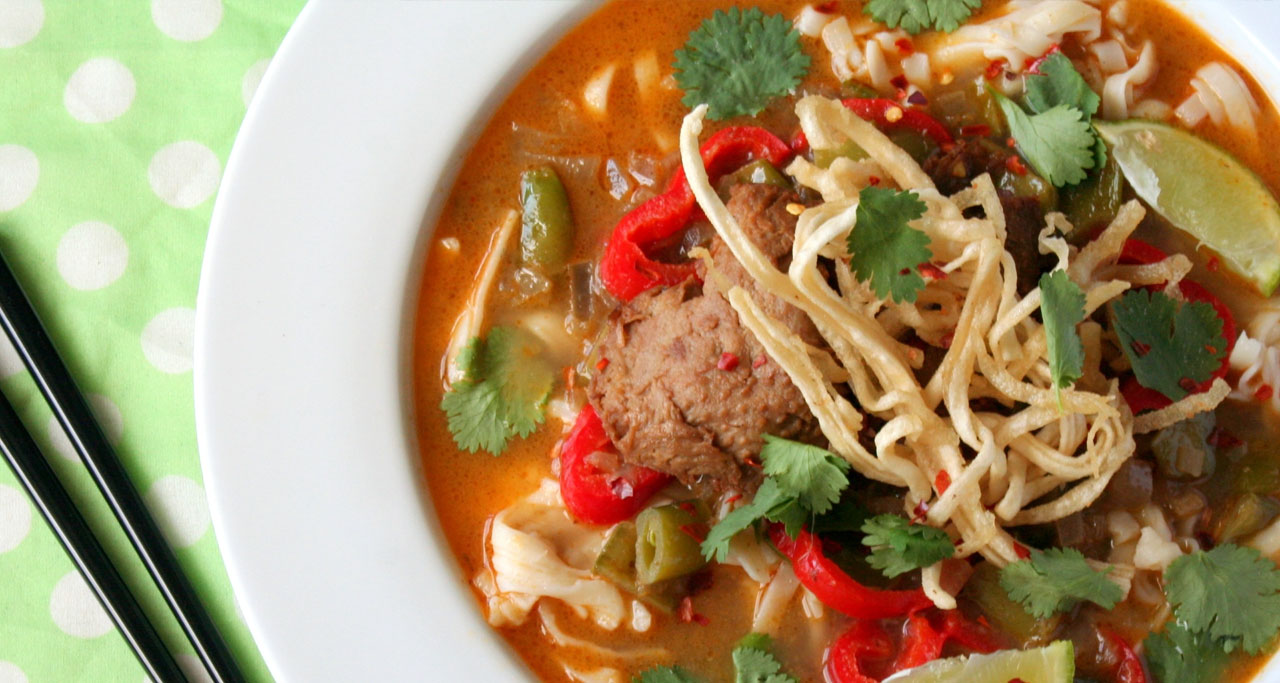
Khao Soi Noodles – a common dish in Luang Prabang.
Larb (or differently spelled as laap, lahp): This is the signature dish of Laos, referred to as the national dish. Laos larb is essentially a salad with thinly sliced meat (can be fish, chicken, pork, beef, buffalo, or duck) or seafood mixed with sauce, vegetables, and herbs. The price is about 30,000-40,000kip per disk.
Sai Oua: This is flavorful Lao Sausage, a grilled pork sausage packed with herbs and spices, typically served with sticky rice. There is also another local Lao sausage, Sai Oua Krouaille, a black spicy grilled buffalo sausage, that you can find in Luang Prabang. You can try them at an estimated price of 20,000-30,000kip.
Apart from the mentioned above, there are also other delicious dishes such as Laotian BBQ, Mok Pa (Fish Steamed in Banana Leaf), Tam Mak Hoong (Spicy Vegetable and Green Salad), Khao Piak Sen (Lao noodle soup), and especially delicious vegetarian buffet.
With drinks, you can buy a cup of fruit juice or sip a cup of light coffee or beer in Laos which is quite good.
IV. Places to visit & Things to do in Luang Prabang.
Luang Prabang has both natural and historical sites, attracting visitors for its beautiful scenery, architecture, and daily life. This UNESCO-ranked list also has a bustling nightlife and is a backpacker hotspot. It is indeed that there is a wide variety of destinations that you may not want to miss when having the opportunity to travel in Luang Prabang, such as Luang Prabang Old Quarter, Mount Phousi, Wat Xieng Thong, Royal Palace Museum, Kuang Si Waterfall, Pak Ou Caves, etc.
You can find more details about places to visit in Luang Prabang
Together with favorite places to visit, you can also choose a list of activities to do from exploring the ancient town, witnessing monks on Alms Giving ceremony in the early morning, walking, trekking, climbing, kayaking, and so on. Read more here: https://laostravel.com/things-to-do-in-luang-prabang/
Above our ultimate Luang Prabang travel guide to help you plan your Laos experience!
V. Accommodation in Luang Prabang
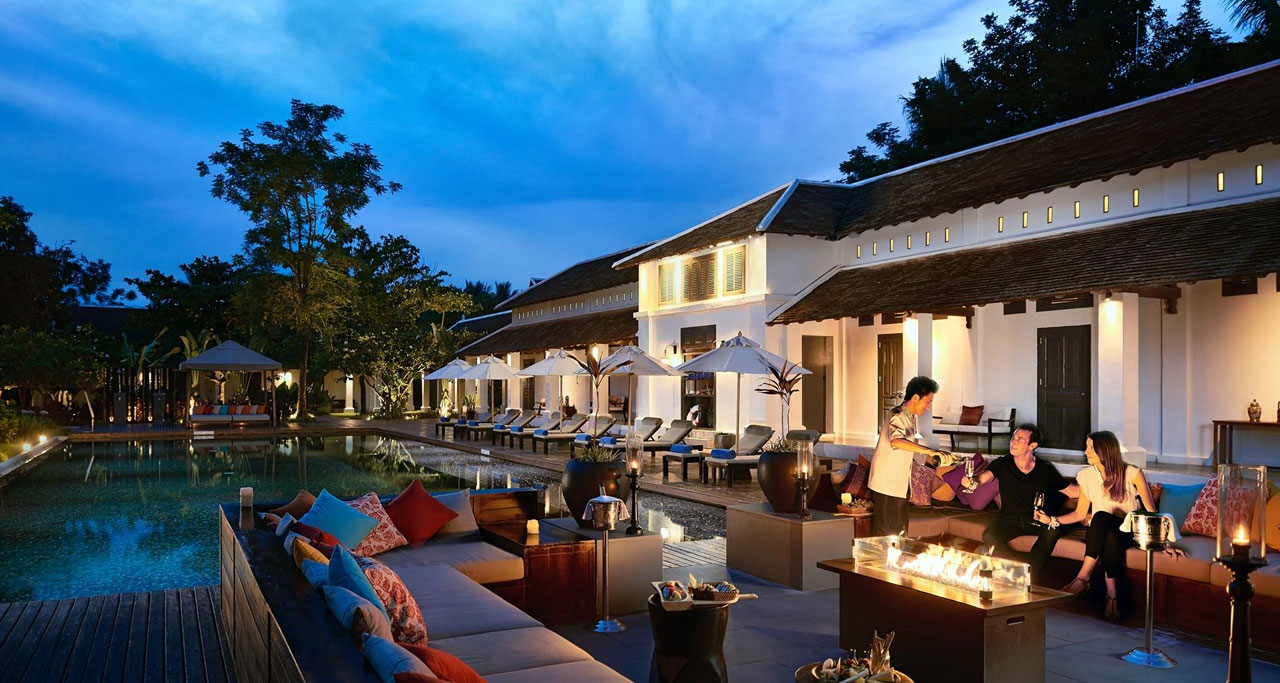
Enjoy a great stay in one of the luxury accommodations in Luang Prabang.
Hotels in Luang Prabang can be classified by location, amenities, and prices. There are a few distinct areas that you can consider to pick the best area to stay in Luang Prabang, such as the area of Old Town, Mekong Riverfront, or Nam Khan Riverfront from guesthouse to 5-star or luxury properties. The hotel category is estimated by its price and amenities. The hotel rates are also varied with much difference by seasons (low-high-peak).
Old Town – might be suitable for those who visit Luang Prabang for the first time as well as the place that has the best neighborhood for families. This is the highlight of Luang Prabang which is bounded by the Mekong and Nam Khan Rivers. Within the UNESCO World Heritage zone, the most historic wats (temples) that you can easily stroll around are in this area and you can also see the monks lining up for the early morning alms. Most of the accommodation here is in the boutique style. For budget options, the price can be slightly higher than other areas, so you can look outside if the price is your concern.
Some accommodation names in Old Town for your reference, including Nam Sok Guesthouse, Villa Chitdara (3*), Villa Ban Lakkham (3*), Sala Prabang (3*), Villa Santi Hotel (4*), Burasari Heritage (4*), Victoria Xieng Thong (4*), Apsara Rive Droite (5*), Amantaka (Luxury), etc.
Mekong Riverfront – This is one of the best neighborhoods for incredible views in Luang Prabang, located along the Mekong River. There are numerous little roads that are lined with budget guesthouses and homestays between Phothisalath Rd (the main road) and Khem Khong (the Mekong road). Other properties for your choice in this area, including My Lao Home Hotel (3*+), Villa Maly Boutique (4*), Maison Dalabua (4*), Avani+ Luang Prabang Hotel (5*), etc.
Nam Khan Riverfront – This is the best place for nightlife with bars, western food cafes alongside hostels, and cheap hotels which bring more of a backpacker vibe. It is also easily walkable to all the sights, however, there is no riverfront road here so there are only a few actual riverfront properties. Here are some suggestions for your consideration, including Y Not Lao Hostel, Chansavang Guesthouse, Villa Namkhan River (3*), Villa Maydou (3*+), Kiridara Villa Visoun (4*), etc.
Outside of these areas, you can also find some other top choices of luxury properties which are a bit further out, such as 5* Satri House, Luangsay Residence, Sofitel Luang Prabang, Pullman, or Belmond La Residence Phou Vao (luxury), etc. These properties can offer shuttle services for the transfer between hotel/town so distance is not a big deal in this small town when you expect a more luxurious experience.
VI. Travel Advisory
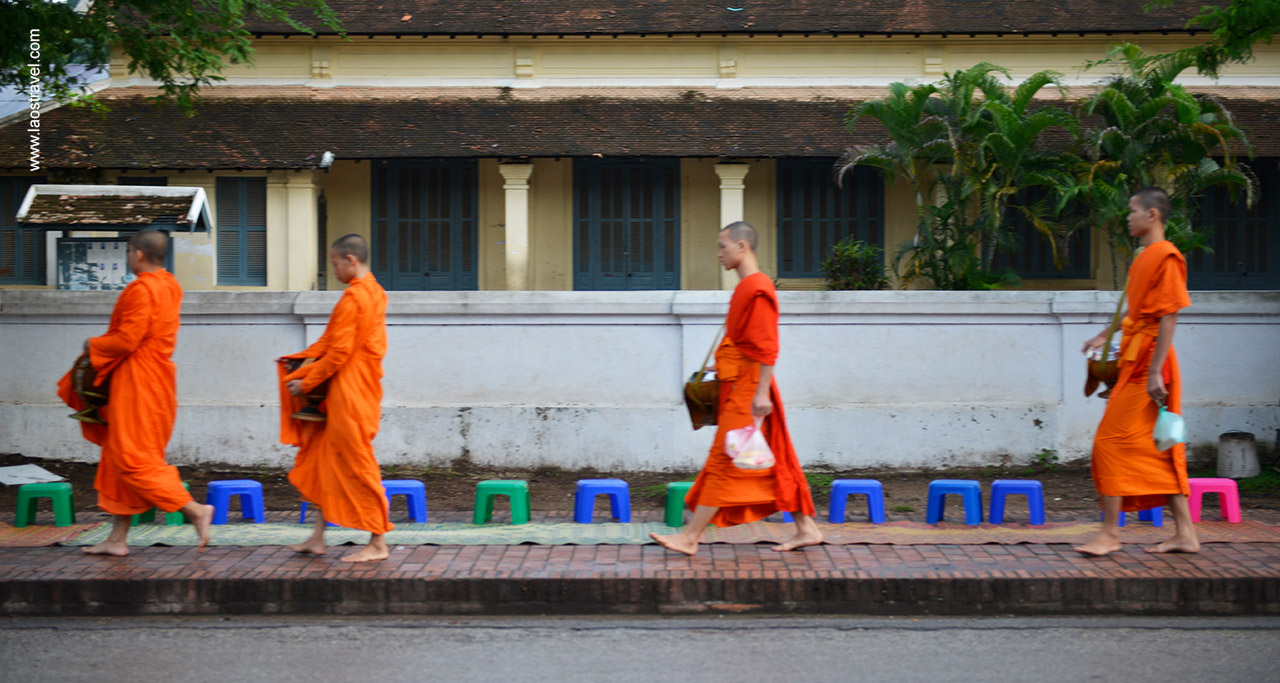
Lao monks are highly respected and revered in Lao communities.
Gear and packing list:
- Clothes and other personal items: shorts, swimsuit (modest), T-shirts, flip-flops, sneakers, socks, toothbrush, toothpaste, towel, sunscreen, sunglasses, hat, insect repellent, toiletries …
- Small medical kit: band-aids, earplugs, hand sanitizer, antibacterial cream…
- Miscellaneous: plastic bags (great for laundry), universal charger/adopter (the standard electrical current used in Laos is 220 volts), water bottle with a purifier…
Dos & Don’ts:
- For budget travelers, you can save money by traveling off-season, renting bicycles to visit around, sticking to the local food, limit your drinking…
- Dress conservatively and modestly as well as remove shoes, hats, and sunglasses before visiting any Buddhist temples
- Keep your eyes on the wallet/purse, and leave the valuables in a safety box
- Prepare copies of your personal documents, including your passport
- Purchase good travel insurance before traveling
- Don’t touch the monks
- Don’t give money to child peddlers
- Don’t contribute to the negative side of tourism (drugs or the sex industry) as Laos is strict about punishment for these things.
Hopefully, our Laos Travel expert guide to Luang Prabang, including the best places to stay, eat, drink as well as the top attractions to visit are helpful and provide you with all of the information that you need to know before you go. What are you waiting for? Just make your plan and contact us anytime. Let’s Laos Travel team be a part of your successful journey to Laos!

